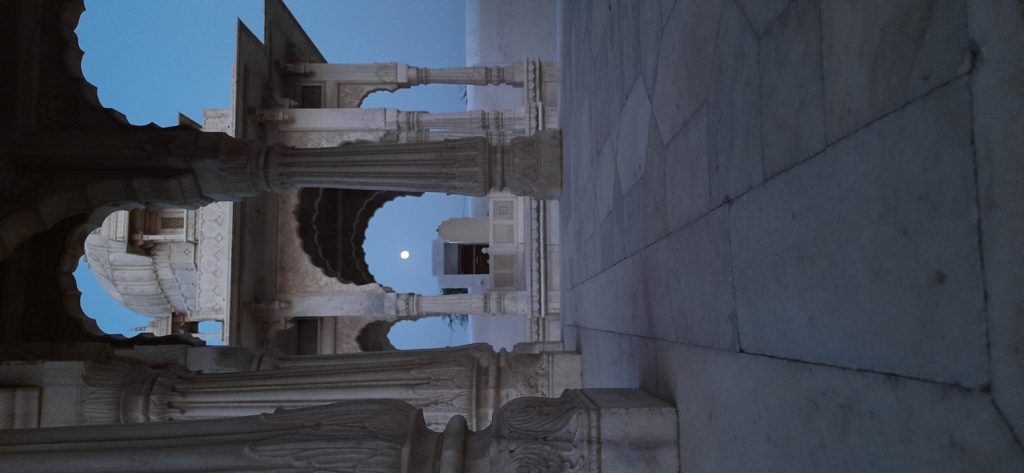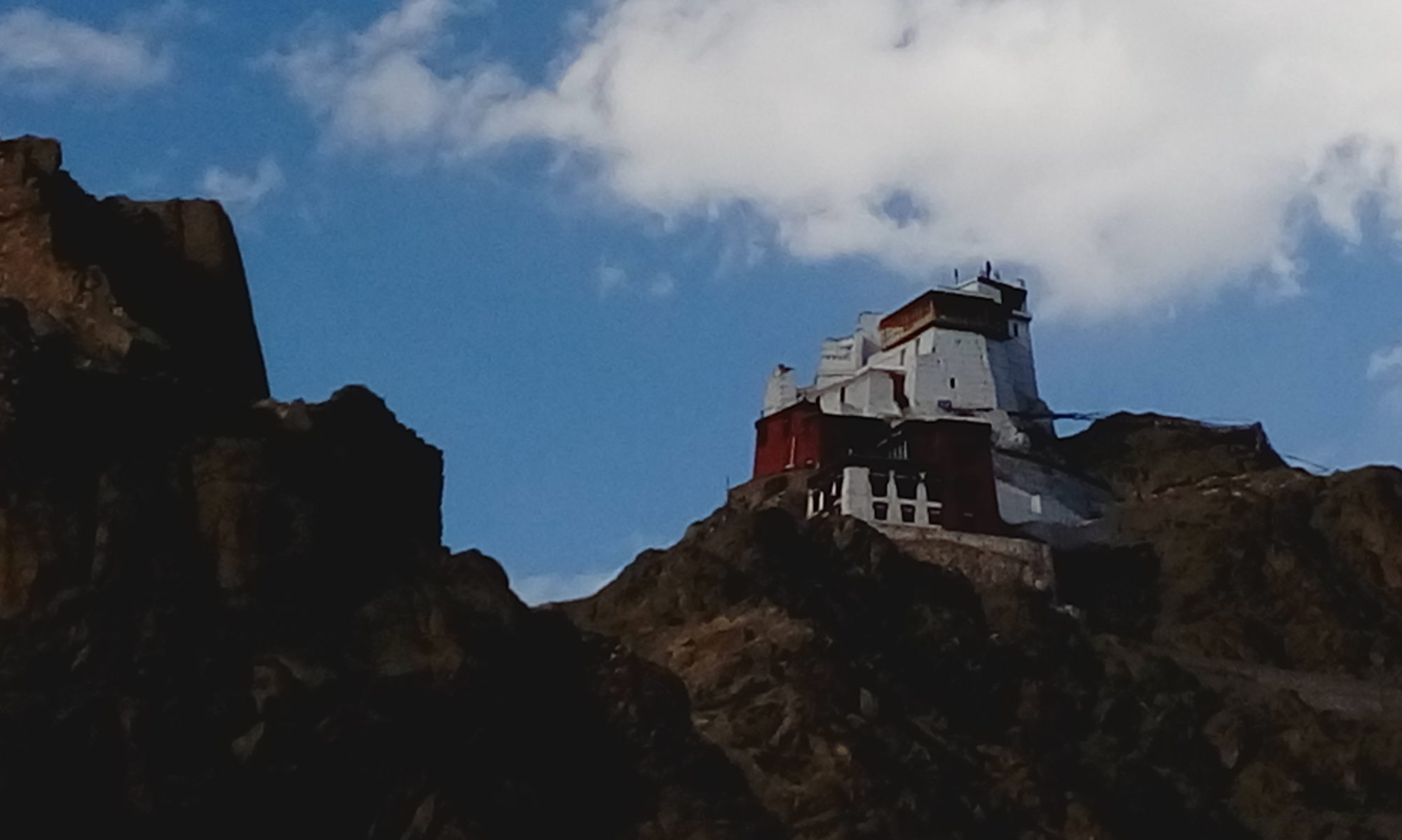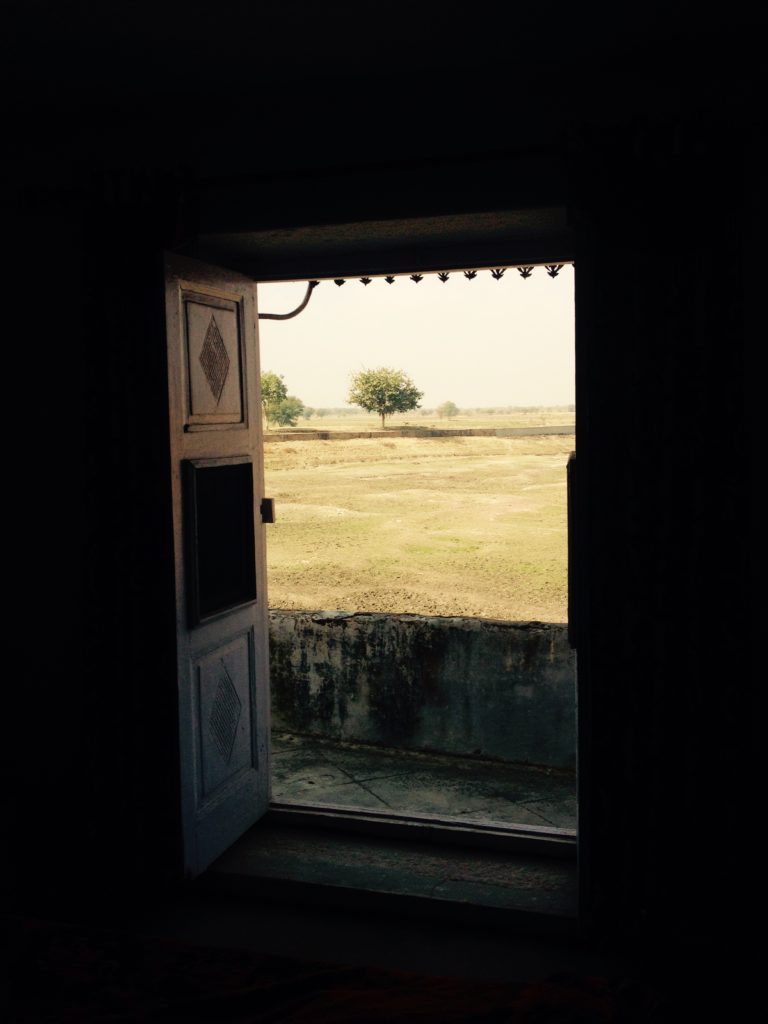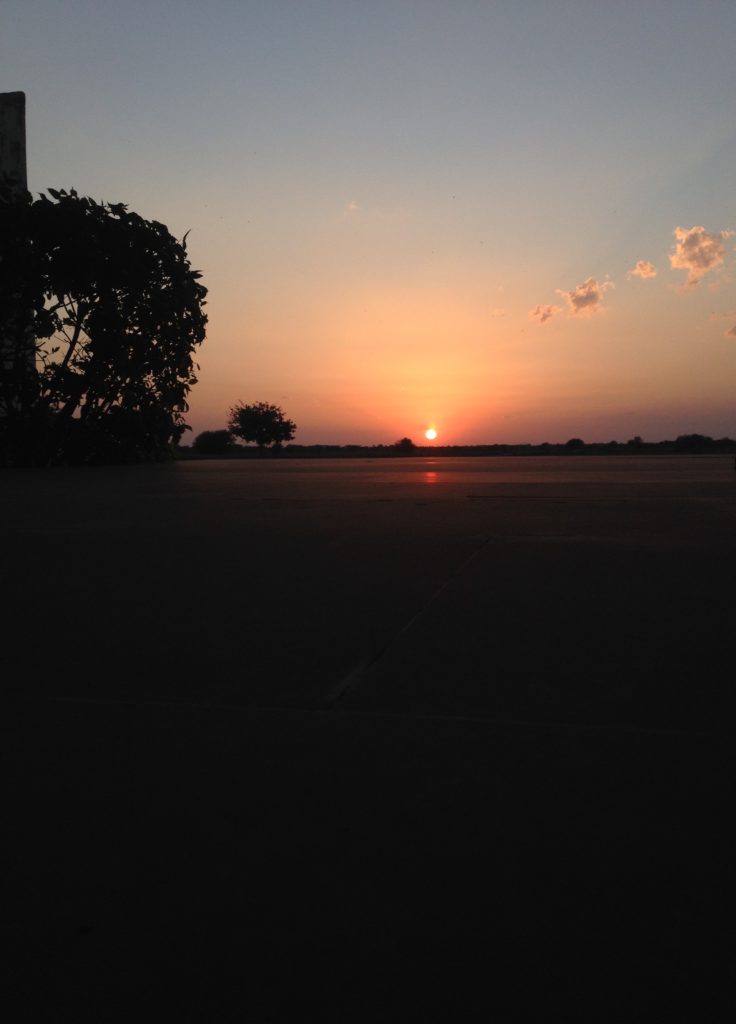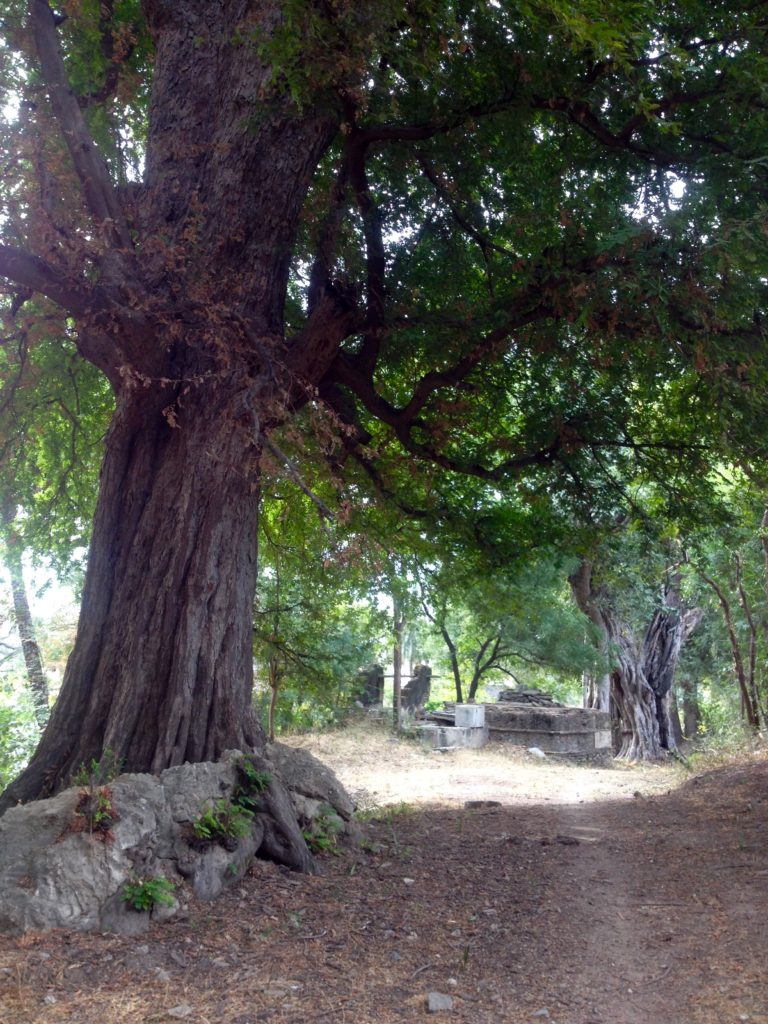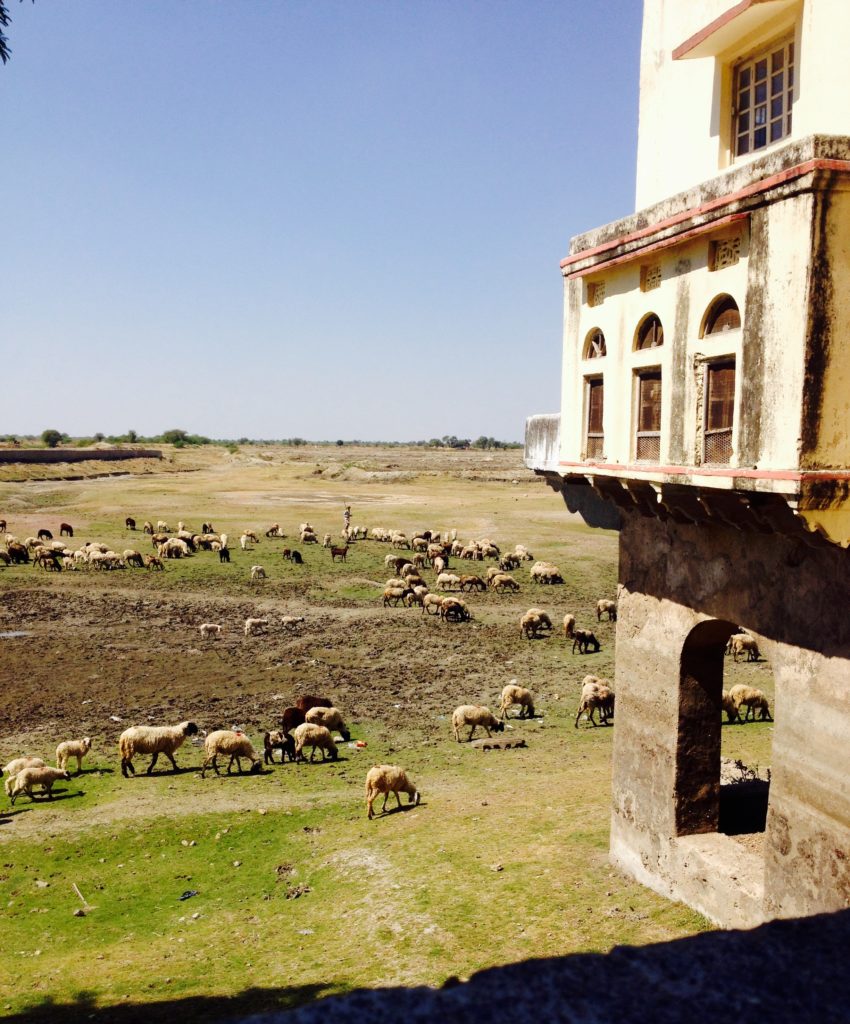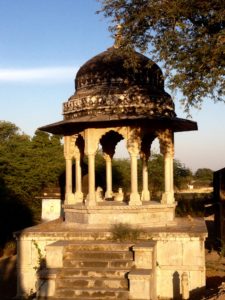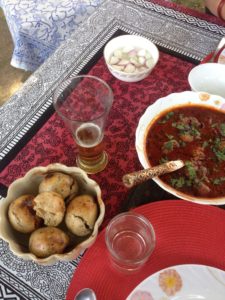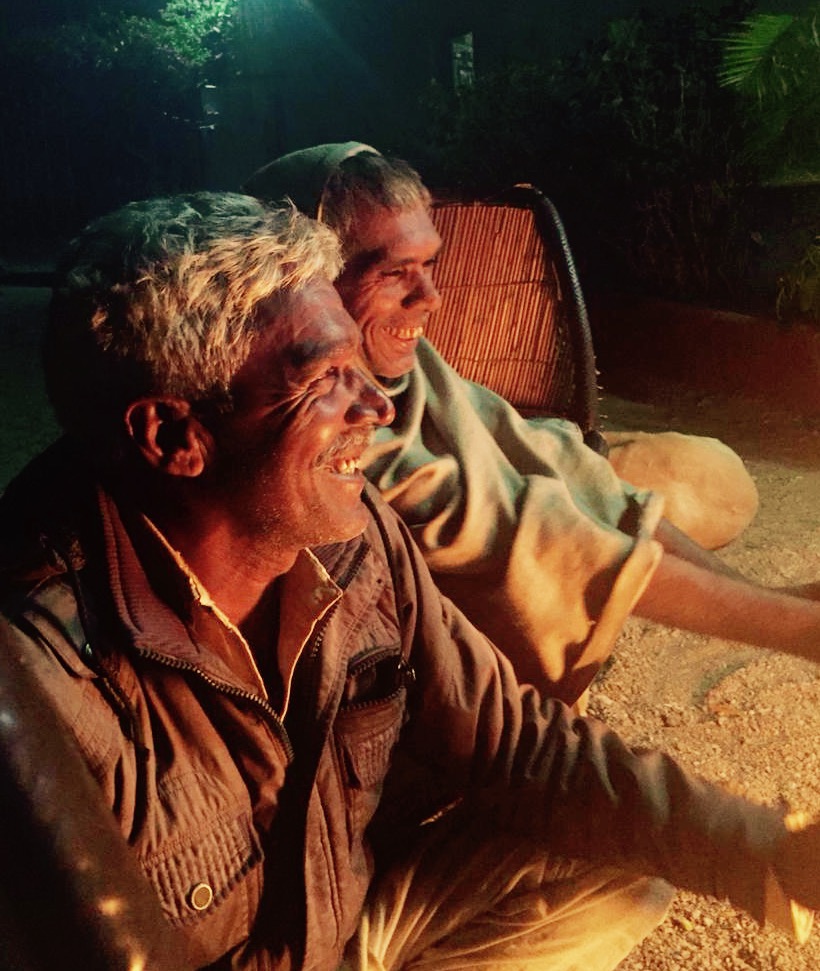If one wants to meet our dearly departed where do we go? In our culture, no particular place it would seem, but there have never been any absolutes. So we find cenotaphs or chattris in many parts of the country, especially of the royal families, built to honour the memory of the nobles. The first cenotaphs I explored were at Orchha. Like breathing gargoyles endangered vultures sat on the eaves of the humongous monuments made in the typically Bundelkandi architecture, rose bushes faintly scenting the air. There also a few generations give each other company in their walled enclosure.
Read about the Chattris of Orchha in- Part One- On the Wild Side of Outstanding Orchha
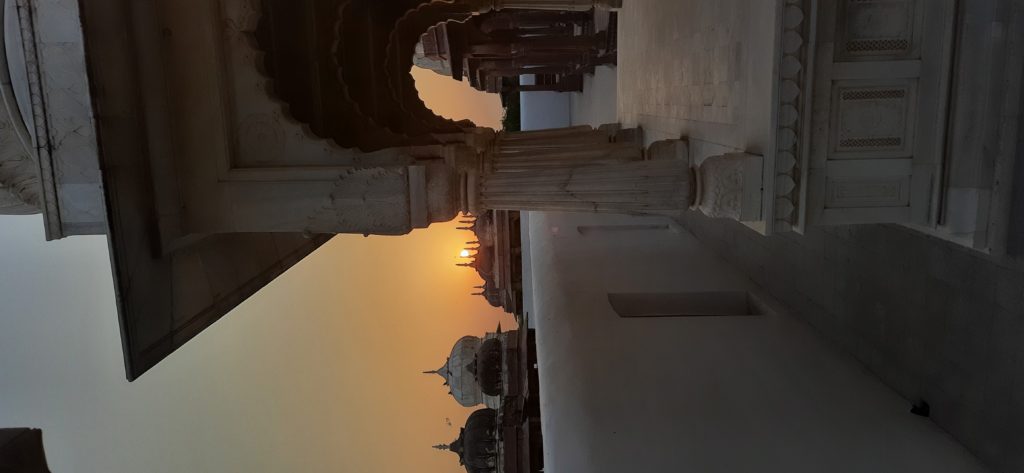
At Bikaner the cenotaphs of the royal family are located at Devi Kund Sagar. Here too on the outskirts of Bikaner the chattris are clustered around in a walled space. But unlike the handful at Orchha, here generations of men, women and children are neatly placed, precisely dated and relations clearly catalogued like a family tree spread in a garden. A requiem in stone. We head there one evening with the sun descending, ready to call it a day. The place is clean and paved thankfully since we have to take off our footwear at the entrance.
Discover – The Gardens of Delhi – A walk not only on the green side but through history itself
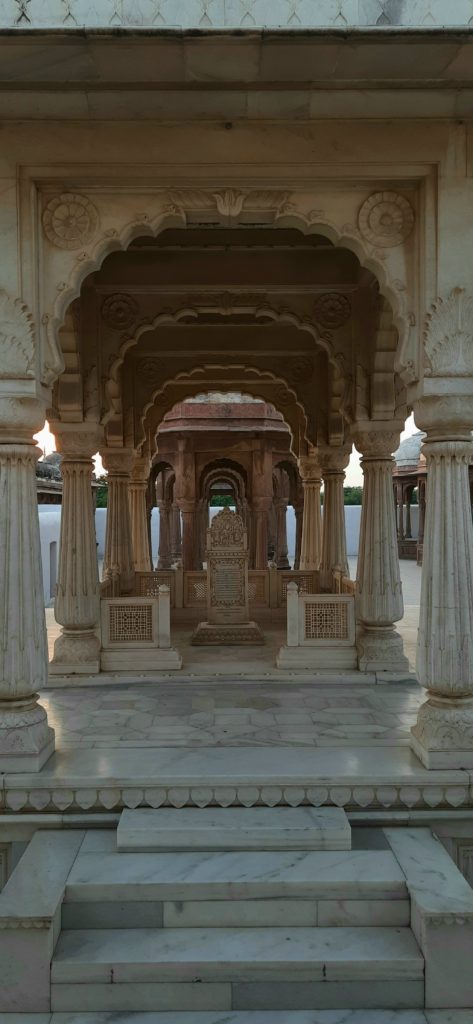
There is some open space as we enter and to a side a small one is being constructed. I wonder how it works …are they made in anticipation according to the wishes of the alive for their ever after resting place or is it left to the whims of the descendants how best to honour the memories? The first one on the right, also the last to be made in 2003 of Maharaja Narendra Singh, is a small chattri in red sandstone, a throwback to the oldest ones at the far end. Two across it are incongruously ‘modern’ and look out of place. They invoke a socialism influenced spartan look somehow in my mind.
There is nothing spartan about- Bikaner’s Merchants and Their Mansions
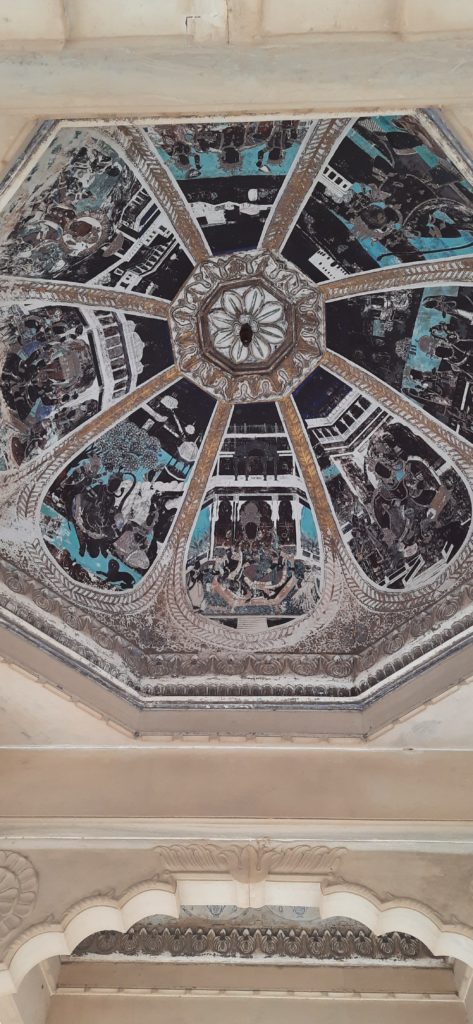
Majority of the big ones in between are of creamy marble with beautifully carved pillars and arches. Some of the domed roofs have stunning artwork on the inside. One follows a limited but eclectic black and blue colour scheme to depict gods and goddess. Another has Radha Krishna in a circular sequence. At the far end they are mostly made of red and pink sandstone with high and beautifully carved floral plinths. The oldest belongs to Rao Kalyanmal, the 5th ruler of Bikaner who died in 1571.
Explore the hues of Rajasthan in- Harlequin Holi at Todaraisingh
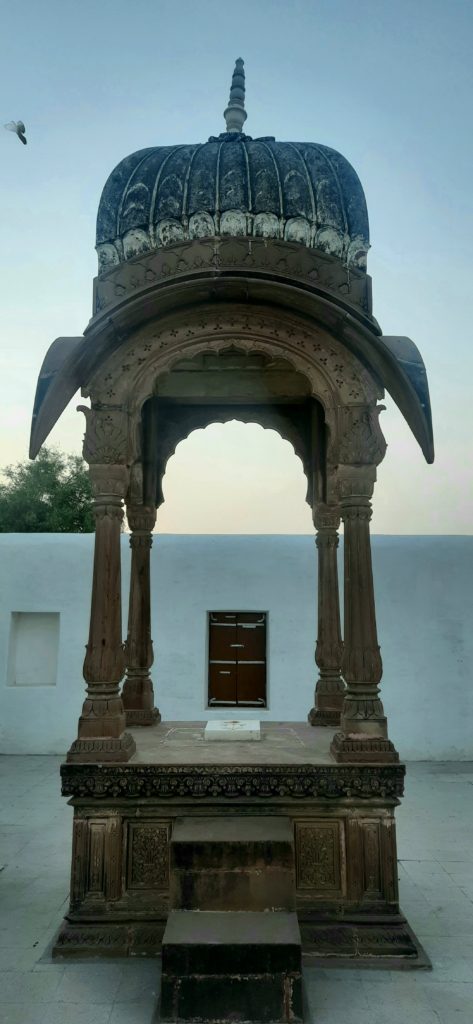
A small one between the big marble and sandstone chattris stands out not only because it belongs to a woman (the board along the wall says Madan Kunwar, 1826) as denoted by the small feet engraved on the marble piece but also because of its distinctive architecture. The eaves curve and sweep down like boughs of a weeping willow.
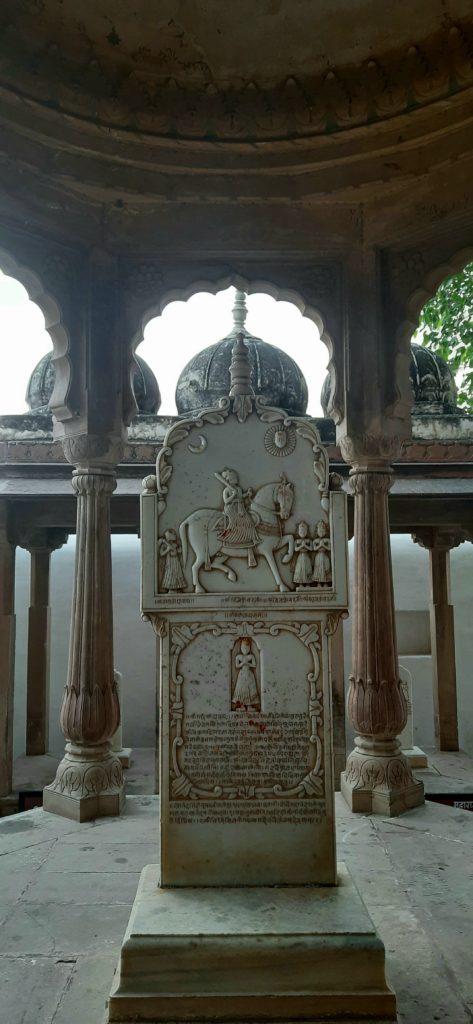
Someone explains the exact iconography in the chattris. The ones belonging to the menfolk have vertical slabs whose edges are beautifully scalloped and carved, engraved with either a man seated with a woman on a throne or alone on a horse, attendants around. Below within a wreath of carved and twisted leaves things are inscribed. . The ones on horseback we are told denote whose wives committed sati on their death. From the first ruler, Rao Bikaji to the thirteenth king, Maharaja Zorawar not only wives but concubines and at times attendants and slave girls too were expected to commit sati. No wonder women pray for their husband’s long life! There is a temple near the end dedicated to Satimata. It is has a lot of visitors. The barbaric practice might have ended but the idea still is romanticized and worshipped.
Where a woman is literally worshipped – Mystic Maheshwar : At the Center of the Universe
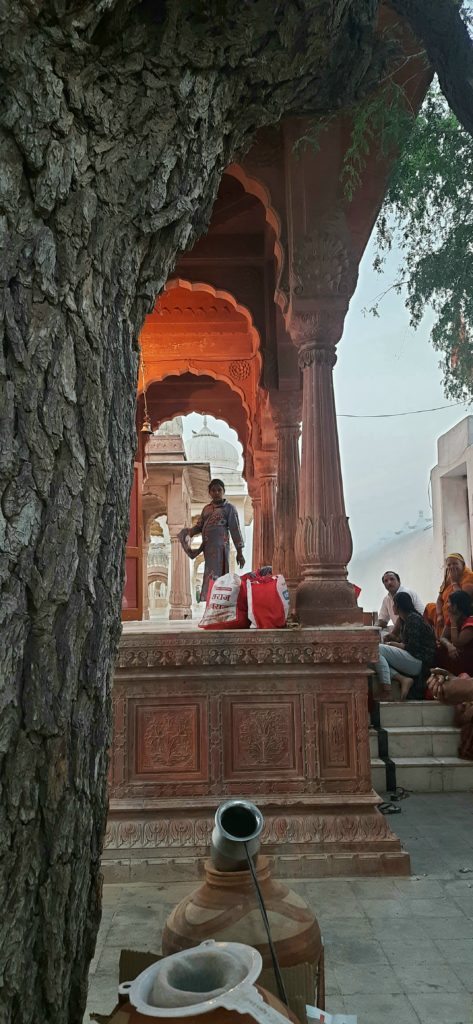
On one end are the chattris of the women in red sandstone. They are smaller and many are devoid of the ornamentation visible in the men’s. Most have a single pair of tiny feet made on a marble piece, boards alongside clearly mentioning their names and that of their husbands. One near the end has four pairs of feet. The board gives three names of women and one of a man. There are 4 different dates mentioned so I don’t think they are satis or a sato, a rare but recorded occurrence where men commit the act too. The family has had a few instances of them. There are memorials of children too called nada. It’s a simple plinth with no canopy.
Reviving past glories and – Satiating Nostalgia Under the Winter Rain at Junia
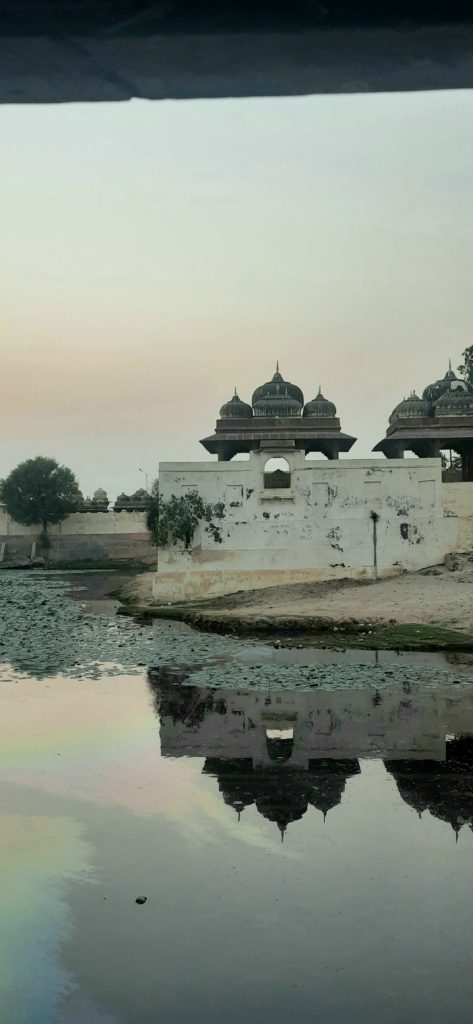
The sun is a ball of blazing orange visible below the arches as curiosity gets the better of me and I unlatch one of the many small wooden doors lined up on the wall, one before each cenotaph. They all open to a sloping ground with broken tombstones, littered with a bit of rubbish ending with an embankment holding back a big pond lined with lotuses. A glossy black cobra slithers amongst the tombstones. As it disappears behind one nearby I hurriedly step back through the door. Latching the door I turn to see the moon has risen and its almost a full moon bathing the monuments in its luminescent light. It is going to be a beautiful night for a family get together.
